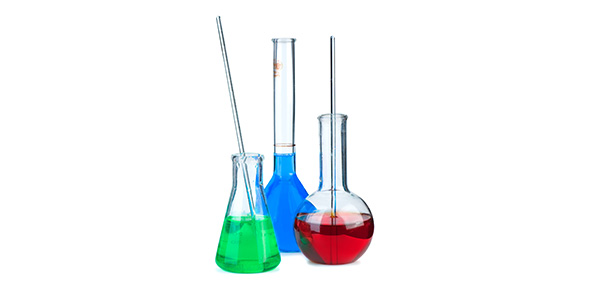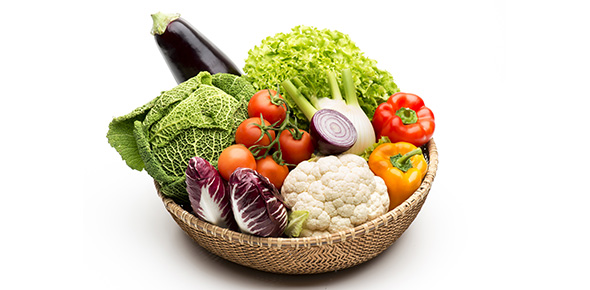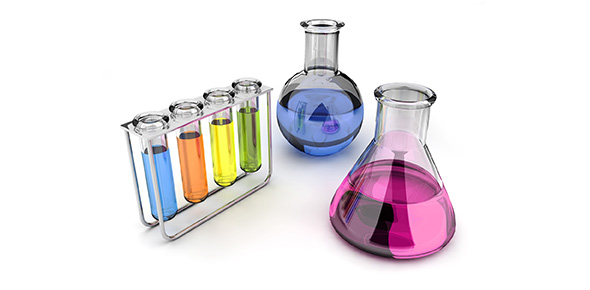Related Flashcards
Cards In This Set
| Front | Back |
|
Why are enzymes referred to as organic catalysts?
|
Enzymes are proteins which act as catalysts to speed up chemical reactions.
|
|
Define the following terms: activation energy, substrate, active site, enzyme-substrate complex.
|
Enzymes speed up chemical reactions by decreasing the energy hurdle that is required to get a chemical reaction started. This is called the activation energy. They don't make a reaction happen; they just make it happen more quickly by getting the reaction started more efficiently. The reactants in an enzyme-catalyzed reaction are known as substrates. The substrates bind to the enzyme at the active site. At the moment the substrate binds the enzyme, the chemical that forms is called the enzyme-substrate complex.
|
|
What accounts for enzyme specificity?
|
Each enzyme has an active site that allows only one substrate to bind, based on the shape of the enzyme and its active site, therefore enzymes are highly specific in activity.
|
|
What happens if enzymes need to catalyze out of their pH or temperature optima?
|
Enzymes have an optimum pH and temperature at which they work best; outside of that optimum range the proteins can become denatured and lose their effectiveness by changing the active site.
|
|
Distinguish between an endoenzyme and an exoenzyme.
|
Endoenzymes work inside the cell and carry out many of the metabolic pathways. Exoenzymes work outside the cell.
|
|
Define the following terms: apoenzyme, holoenzyme, co-enzyme, cofactor.
|
The protein portion of an enzyme is sometimes known as the apoenzyme. Many enzymes have a non-protein "helper" which participates in the catalysis of the reaction. Co-enzymes are organic substances such as vitamins which sit in the active site of the enzyme and carry charged paticles such as electrons as part of the reaction. Many of the catabolic reactions use co-enzymes to carry high energy electrons to the electron transport chain for ATP production. Co-factors are inorganic ions which sit in the active site of the protein and help attract the substrate by a charge interaction. The combination of the apoenzyme (the protein) and the co-enzyme or co-factor is known as the holoenzyme. The holoenzyme must be complete if it is to catalyze the reaction optimally.
|
|
Distinguish between a competitive and non-competitive inhibitor.
|
A competitive inhibitor "looks" very similar to the substrate and competes with the substrate for the active site of the enzyme and therefore prevents product formation. This type of inhibition can be blocked by a large amount of substrate as compared to the inhibitor. A non-competitive inhibitor binds to a site distinct from the active site known as an allosteric site. When this occurs, the shape of the protein is changed, including the active site. Since the inhibitor does not directly compete with the substrate, no matter how much substrate is present, this form of inhibition cannot be blocked.
|
|
How do anabolism and catabolism relate to metabolism?
|
Anabolism describes the chemical reactions which utilize energy such as the biosynthetic reactions used for manufacturing macromolecules from basic subunits. Building polysaccharides from single sugar subunits or building complex proteins from hundreds of amino acids would be examples of anabolic reactions. Catabolism describes the energy producing chemical reactions of the cell. These are the reactions that involve the breakdown of large macromolecules and the subsequent energy release in the form of molecules of ATP.
|
|
What is the significance of ATP?
|
Energy is released in the form of molecules of ATP. Organisms can catabolize the organic molecules for energy by manufacturing molecules of ATP which can then be used for anabolism.
|
|
Distinguish between autotrophs and heterotrophs.
|
Some organisms are autotrophs which means they are self-feeders; they use carbon dioxide to manufacture organic molecules through the process of photosynthesis. Many aquatic bacteria and algae are autotrophs. Other organisms are heterotrophs; they need to consume food for energy.
|
|
What are oxidation and reduction reactions?
|
Oxidation reactions are those in which electrons are lost by a molecule. This often occurs when chemical bonds are broken (remember, the covalent bonds of most macromolecules involve the sharing of electrons). Reduction reactions are those in which electrons are gained by a molecule. This usually occurs when a coenzyme captures elctrons after a bond is broken.
|
|
What are the significant features of glycolysis?
|
In glycolysis, a 6 carbon sugar is broken down into two 3 carbon molecules. The monosaccharide glucose is catabolized to 2 molecules of pyruvic acid. In this catabolic pathway, glucose is first energized by the addition of two high energy phosphate bonds from ATP. Then a covalent carbon-carbon bond is broken and the electrons are captured by the coenzyme NAD (nicotinamide adenine dinucleotide). Then the high energy phosphate bonds are broken to yield a net of 2 ATP molecules. In anaerobic catabolism, each pyruvic acid is the substrate for some fermentation reaction.
|
|
What chemical is the starting point and what chemicals are the ending points of fermentation?
|
Each reaction, catalyzed by a different enzyme, converts pyruvic acid to some 2 carbon organic acid or alcohol. In alcoholic fermentation, the end product is ethyl alcohol. In homolactic acid fermentation, the end product is lactic acid. No additional ATP is produced in any of the fermentation reactions.
|
|
What is the most important function of fermentation?
|
The value of fermentation is in the reozidation of coenzymes that were reduced in glycolysis. This permits the glycolytic pathway to continue. If fermentation did not occur, all of the coenzymes would be tied up with electrons in their reduced form, and glycolysis would stop. Since no ATP could be produced, the cells would die.
|
|
What pathway does anaerobic and aerobic catabolism have in common and which are different?
|
In aerobic carbohydrate catabolism, the process begins in exactly the same way as in anaerobic catabolism, with glycolysis. Once glucose is converted to 2 molecules of pyruvic acid, the process differentiates.
|






